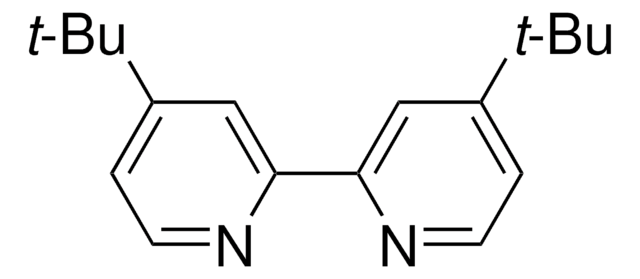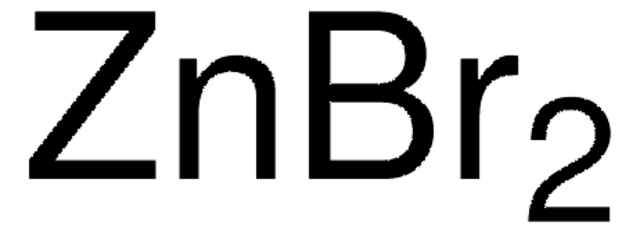746355
Zinc chloride
anhydrous, free-flowing, Redi-Dri™, ACS reagent, ≥97%
Sinonimo/i:
Dichlorozinc
About This Item
Prodotti consigliati
Grado
ACS reagent
anhydrous
Livello qualitativo
Tensione di vapore
1 mmHg ( 428 °C)
Nome Commerciale
Redi-Dri™
Saggio
≥97%
Forma fisica
powder, crystals or granules
Qualità
free-flowing
Impiego in reazioni chimiche
reagent type: catalyst
core: zinc
Impurezze
Oxychloride, passes test
≤0.005% insolubles
pH
5 (20 °C, 100 g/L)
Punto di fusione
293 °C (lit.)
Anioni in tracce
nitrate (NO3-): ≤0.003%
sulfate (SO42-): ≤0.01%
Cationi in tracce
Ca: ≤0.06%
Fe: ≤0.001%
K: ≤0.02%
Mg: ≤0.01%
NH4+: ≤0.005%
Na: ≤0.05%
Pb: ≤0.005%
Stringa SMILE
[Cl-].[Cl-].[Zn++]
InChI
1S/2ClH.Zn/h2*1H;/q;;+2/p-2
JIAARYAFYJHUJI-UHFFFAOYSA-L
Cerchi prodotti simili? Visita Guida al confronto tra prodotti
Descrizione generale
Applicazioni
- A catalyst to synthesize 5-substituted 1H-tetrazoles by [3 + 2] cycloaddition reaction of organic nitriles with sodium azide.
- A reagent to promote the hydrolysis of NaBH4 for the generation of hydrogen.
- A reagent for the activation of carbon materials.
Note legali
Avvertenze
Danger
Indicazioni di pericolo
Consigli di prudenza
Classi di pericolo
Acute Tox. 4 Oral - Aquatic Acute 1 - Aquatic Chronic 1 - Eye Dam. 1 - Skin Corr. 1B - STOT SE 3
Organi bersaglio
Respiratory system
Codice della classe di stoccaggio
8B - Non-combustible corrosive hazardous materials
Classe di pericolosità dell'acqua (WGK)
WGK 3
Punto d’infiammabilità (°F)
Not applicable
Punto d’infiammabilità (°C)
Not applicable
Certificati d'analisi (COA)
Cerca il Certificati d'analisi (COA) digitando il numero di lotto/batch corrispondente. I numeri di lotto o di batch sono stampati sull'etichetta dei prodotti dopo la parola ‘Lotto’ o ‘Batch’.
Possiedi già questo prodotto?
I documenti relativi ai prodotti acquistati recentemente sono disponibili nell’Archivio dei documenti.
I clienti hanno visto anche
Il team dei nostri ricercatori vanta grande esperienza in tutte le aree della ricerca quali Life Science, scienza dei materiali, sintesi chimica, cromatografia, discipline analitiche, ecc..
Contatta l'Assistenza Tecnica.








